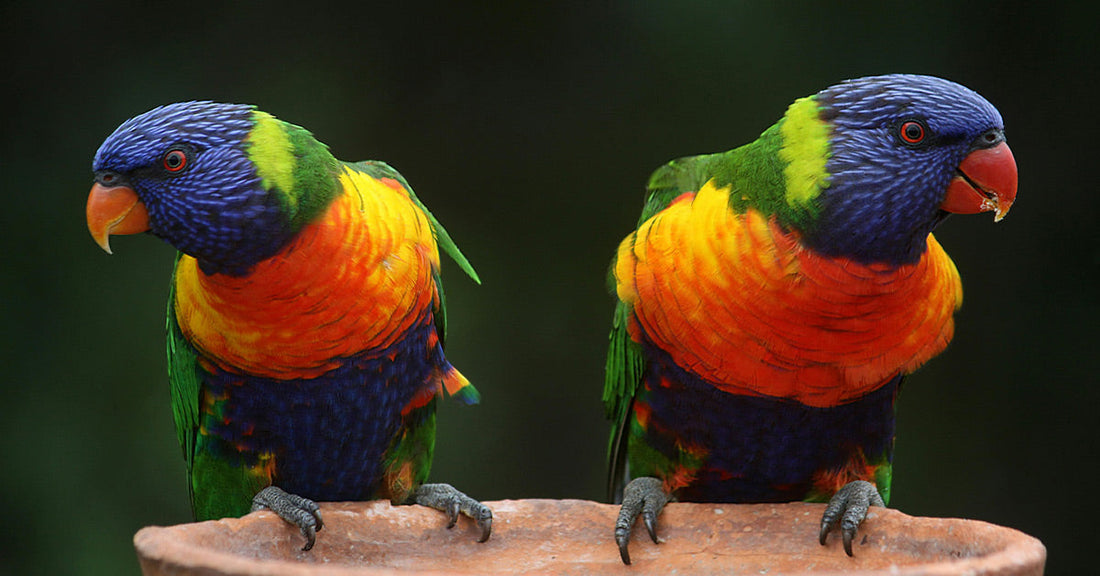Study Finds Songbirds Form Emotional Bonds That Mirror Human Loyalty
Matthew Russell
In the wild, companionship is not just a human thing. For birds, social bonds often go deeper than survival instincts. From warblers who migrate together to superb starlings who help each other raise chicks, birds across species are proving they have something akin to friendships. And science is finally catching up.

Birds form stable, long-term partnerships with non-relatives.
Friendship Beyond Bloodlines
For decades, researchers believed that animal cooperation mainly existed within family units. But in a 20-year field study of superb starlings in Kenya, researchers from Columbia University discovered that these colorful songbirds regularly help unrelated individuals, including feeding each other’s chicks and defending nests. Over time, these bonds strengthened, with the same pairs choosing to help one another again and again, season after season.
Dr. Dustin Rubenstein, one of the lead scientists on the project, explained to The New York Times, “We think that these reciprocal helping relationships are a way to build ties.”
Some birds that helped others in one breeding season were helped in return the next, in what appears to be social memory and loyalty among non-relatives.
The research team, whose work was published in Nature, logged more than 40 breeding seasons. They found that helpers—who forgo breeding themselves—provided food, protection, and assistance to both kin and non-kin, suggesting that the benefits of these relationships extend beyond genetics.

Migration data shows some birds reunite across years.
Mixed Groups, Lasting Bonds
Superb starlings live in groups ranging from 7 to 60 individuals. These flocks aren’t just family gatherings; they include immigrants from other groups, too. In some cases, individuals switched between breeding and helping roles multiple times in their lifetimes.
Out of 329 individuals tracked, 73% changed roles at least once, allowing for a kind of social reciprocity that mimics long-term friendship structures among humans.
Interestingly, reciprocal help wasn’t limited to close relatives. The researchers identified 142 unique pairings in which birds had helped each other across years.
“To me, that sounds like friendship,” Dr. Alexis Earl, co-author of the study and a biologist at Cornell University, told The New York Times.

Non-kin cooperation among birds is more common than thought.
Travel Companions and Migratory Pals
It's not just cooperative breeders like the starlings showing these social tendencies. According to BBC Newsround, a massive data set tracking songbirds during migration revealed that some birds meet up year after year. At least two semipalmated sandpipers were found at the same beach in Massachusetts two years after being tagged together in Canada, suggesting they might travel as pairs or maintain a social link over time.
Though researchers couldn’t confirm whether the birds’ relationship was positive or competitive, consistent co-occurrence hints at more than chance. It mirrors the idea that certain bird species may form “travel buddy” bonds, helping each other navigate or find food across thousands of miles.

Even wild birds display loyalty to past companions.
Species That Prefer Familiar Faces
Social bonding in birds isn’t confined to migration or cooperative breeding. Many birds, including flamingos, parrots, and crows, choose to spend time with specific individuals. A long-term study at the University of Exeter, highlighted in Earth.fm, showed that flamingos maintain stable friendships over many years. These partnerships were so consistent that the researchers described their societies as “long-standing preferential partnerships.”
Meanwhile, Birdful reports that parrots, penguins, and even roosters engage in complex social behaviors, such as mutual preening, joint parenting, and coordinated foraging. Birds use songs, dances, grooming, and touch to communicate affection and trust.

Larger social bird groups have higher reproductive success.
The Hidden Power of Helping
Back in Kenya, the superb starlings’ mixed-kin societies thrive because everyone contributes. Group size is critical. Birds in larger groups survive longer and raise more chicks, giving helpers a selfish reason to lend a beak. Still, even when given the choice between helping kin or non-kin, many birds chose non-relatives.
Why? Reciprocity plays a large role. Helping a bird today might mean getting help next season. And in harsh environments like the savanna, that can make the difference between success and failure. As Rubenstein’s team found, birds that received help were 2.7 times more likely to give it in return, regardless of kinship.

Birds sometimes prioritize friends over family when helping.
Are We So Different?
The more researchers uncover about avian social behavior, the more the lines blur between human and animal communities. Birds don’t just work together out of instinct. They remember, prefer, and return to familiar faces. They show loyalty, avoid rivals, and sometimes even grieve.
As New Atlas put it, many birds are “essentially forming friendships over time.” It’s a conclusion that challenges long-held assumptions about intelligence and emotion in animals.
Perhaps the lesson here isn’t just about birds. It’s about the power of consistent kindness—how helping others, whether winged or not, can build something as powerful as friendship.

